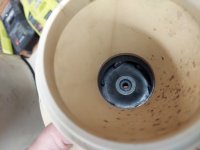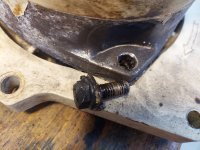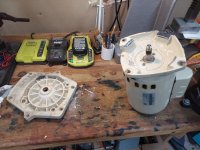Some photos:







One thing that interests me is the impeller has quite a lot of slop where it fits into the diffuser (see last three images). I wonder if this is not allowing air to come back into the front of the impeller. I don't have anything to compare it too. It has about 1/8 of movement, which I tried to illustrate in the last two images. Is this normal? Should I get a new diffuser and pehaps impeller?







One thing that interests me is the impeller has quite a lot of slop where it fits into the diffuser (see last three images). I wonder if this is not allowing air to come back into the front of the impeller. I don't have anything to compare it too. It has about 1/8 of movement, which I tried to illustrate in the last two images. Is this normal? Should I get a new diffuser and pehaps impeller?
Last edited:








